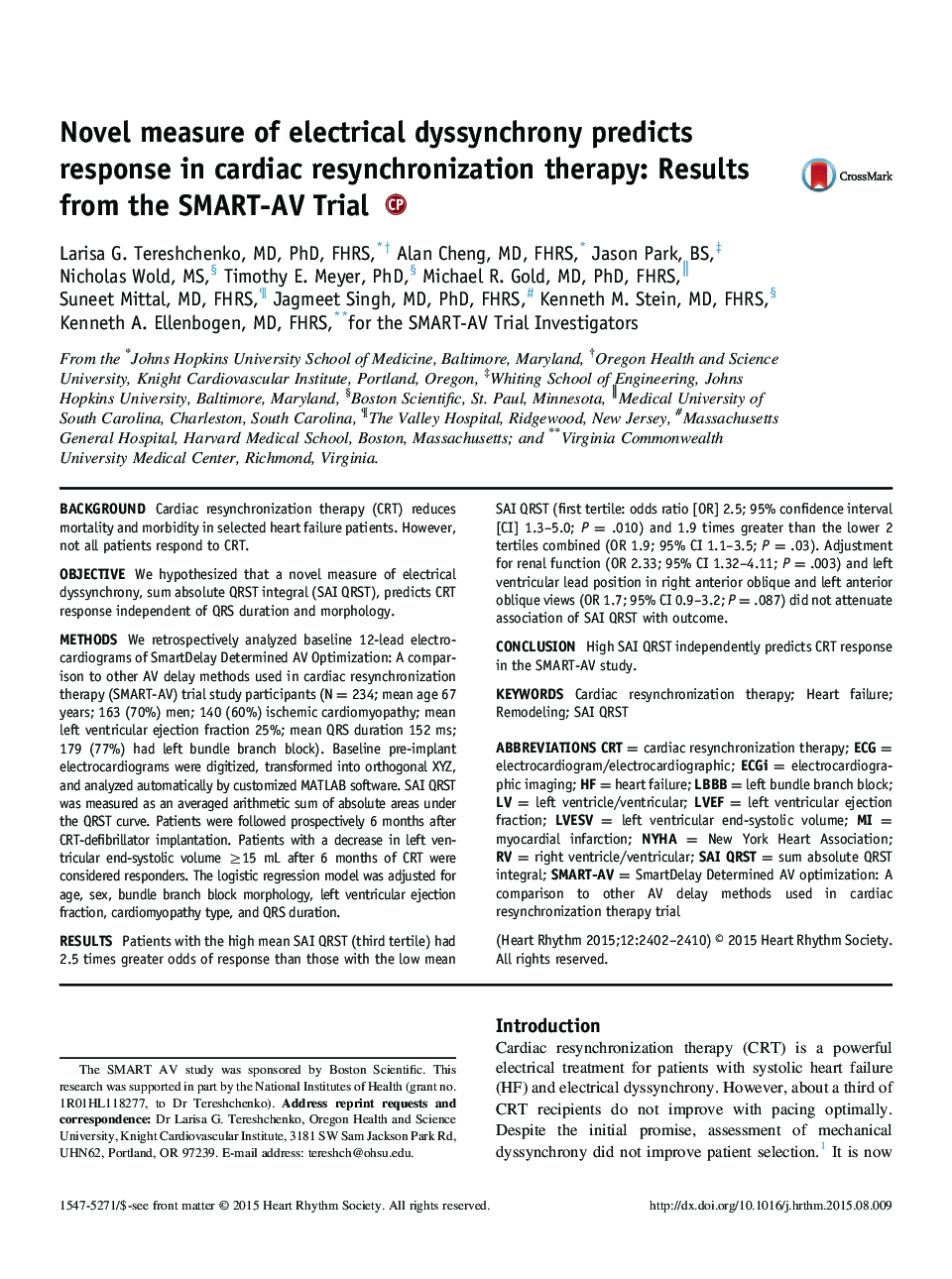| کد مقاله | کد نشریه | سال انتشار | مقاله انگلیسی | نسخه تمام متن |
|---|---|---|---|---|
| 2921796 | 1175804 | 2015 | 9 صفحه PDF | دانلود رایگان |

BackgroundCardiac resynchronization therapy (CRT) reduces mortality and morbidity in selected heart failure patients. However, not all patients respond to CRT.ObjectiveWe hypothesized that a novel measure of electrical dyssynchrony, sum absolute QRST integral (SAI QRST), predicts CRT response independent of QRS duration and morphology.MethodsWe retrospectively analyzed baseline 12-lead electrocardiograms of SmartDelay Determined AV Optimization: A comparison to other AV delay methods used in cardiac resynchronization therapy (SMART-AV) trial study participants (N = 234; mean age 67 years; 163 (70%) men; 140 (60%) ischemic cardiomyopathy; mean left ventricular ejection fraction 25%; mean QRS duration 152 ms; 179 (77%) had left bundle branch block). Baseline pre-implant electrocardiograms were digitized, transformed into orthogonal XYZ, and analyzed automatically by customized MATLAB software. SAI QRST was measured as an averaged arithmetic sum of absolute areas under the QRST curve. Patients were followed prospectively 6 months after CRT-defibrillator implantation. Patients with a decrease in left ventricular end-systolic volume ≥15 mL after 6 months of CRT were considered responders. The logistic regression model was adjusted for age, sex, bundle branch block morphology, left ventricular ejection fraction, cardiomyopathy type, and QRS duration.ResultsPatients with the high mean SAI QRST (third tertile) had 2.5 times greater odds of response than those with the low mean SAI QRST (first tertile: odds ratio [OR] 2.5; 95% confidence interval [CI] 1.3–5.0; P = .010) and 1.9 times greater than the lower 2 tertiles combined (OR 1.9; 95% CI 1.1–3.5; P = .03). Adjustment for renal function (OR 2.33; 95% CI 1.32–4.11; P = .003) and left ventricular lead position in right anterior oblique and left anterior oblique views (OR 1.7; 95% CI 0.9–3.2; P = .087) did not attenuate association of SAI QRST with outcome.ConclusionHigh SAI QRST independently predicts CRT response in the SMART-AV study.
Journal: Heart Rhythm - Volume 12, Issue 12, December 2015, Pages 2402–2410